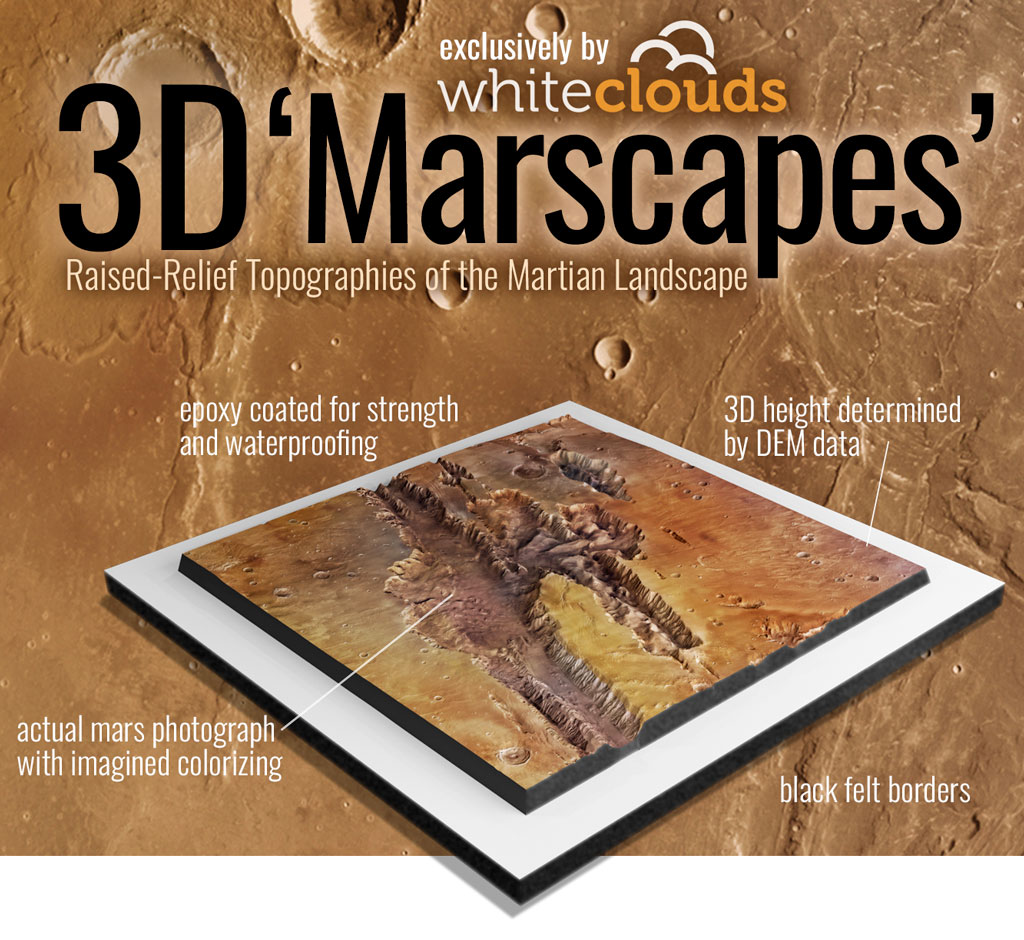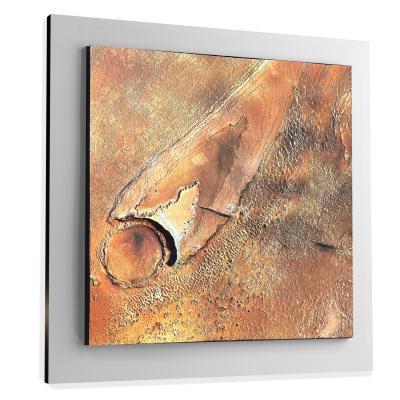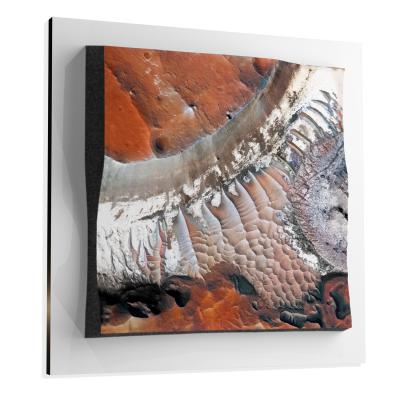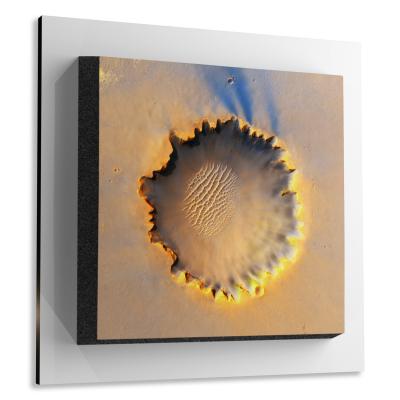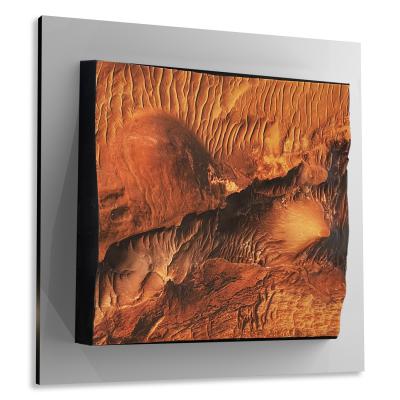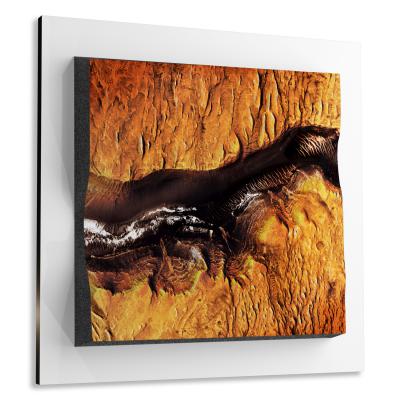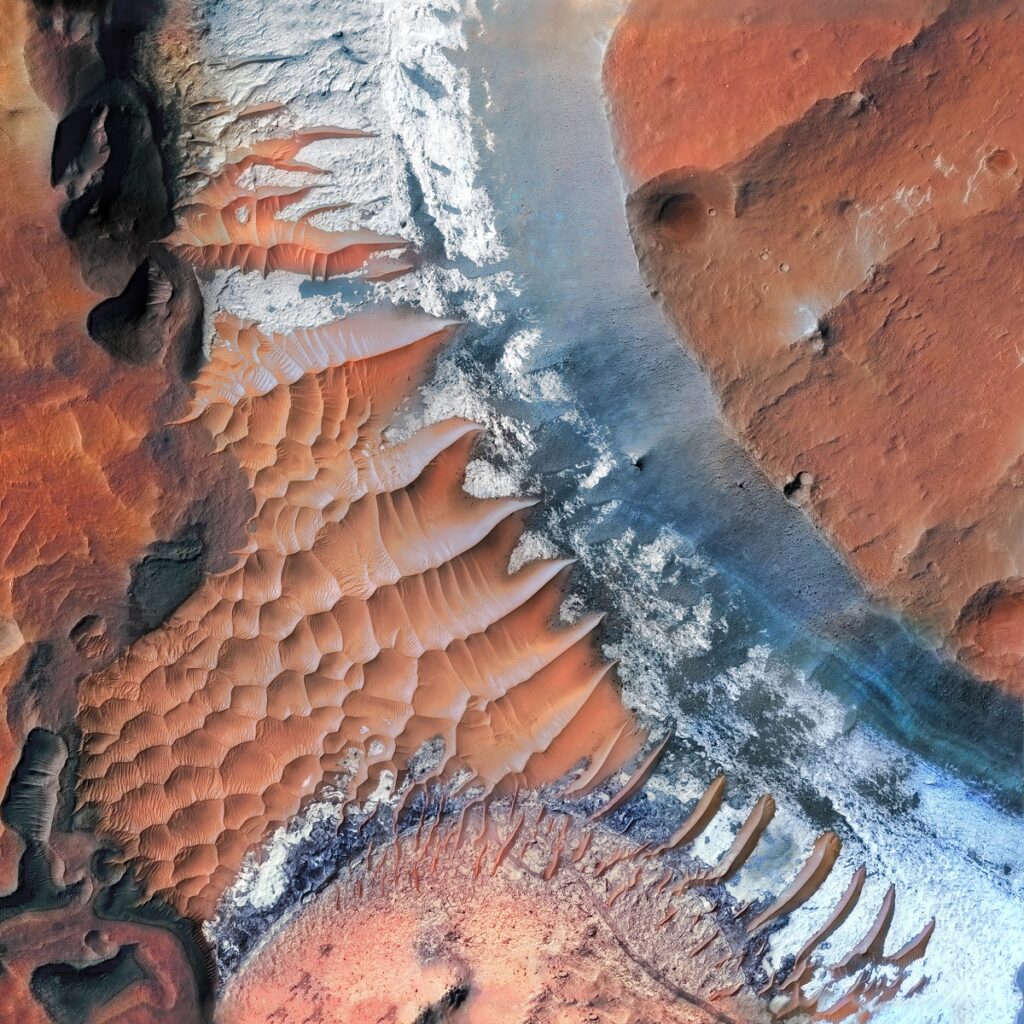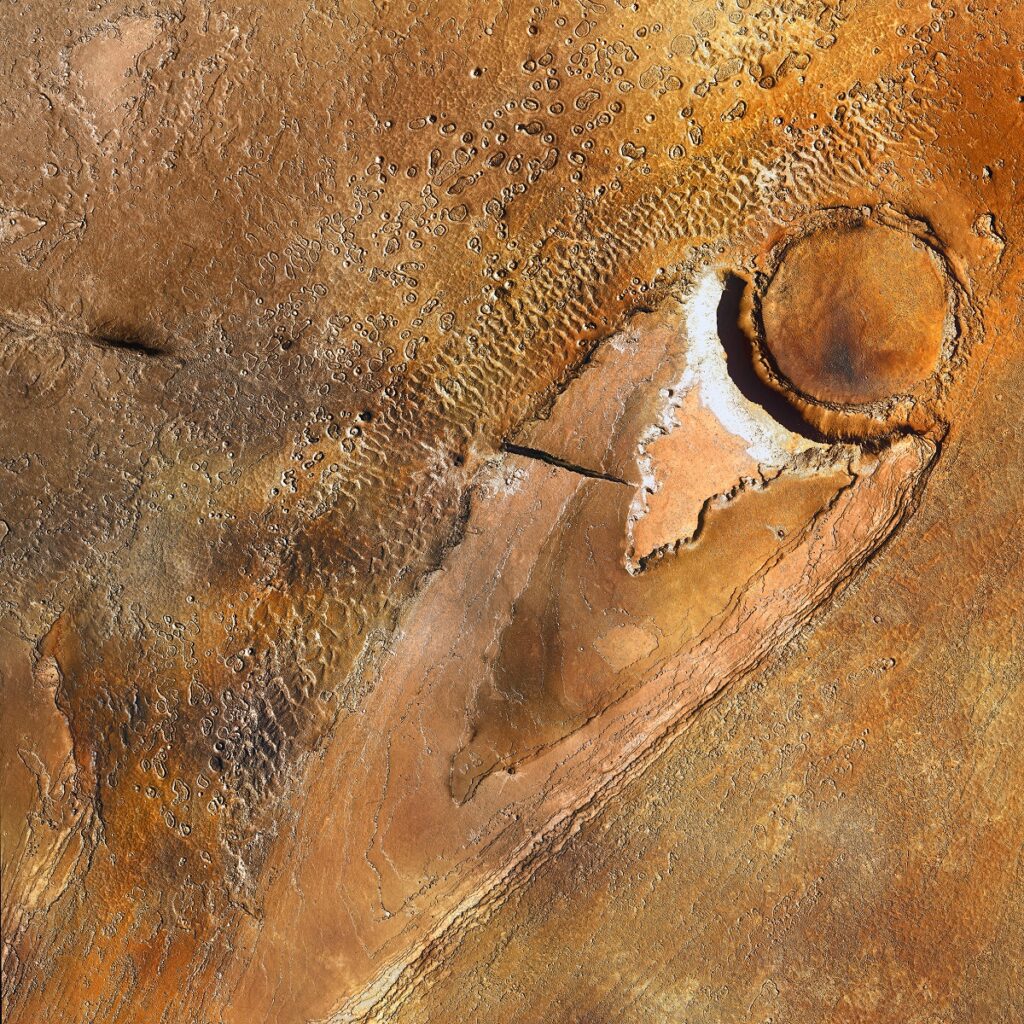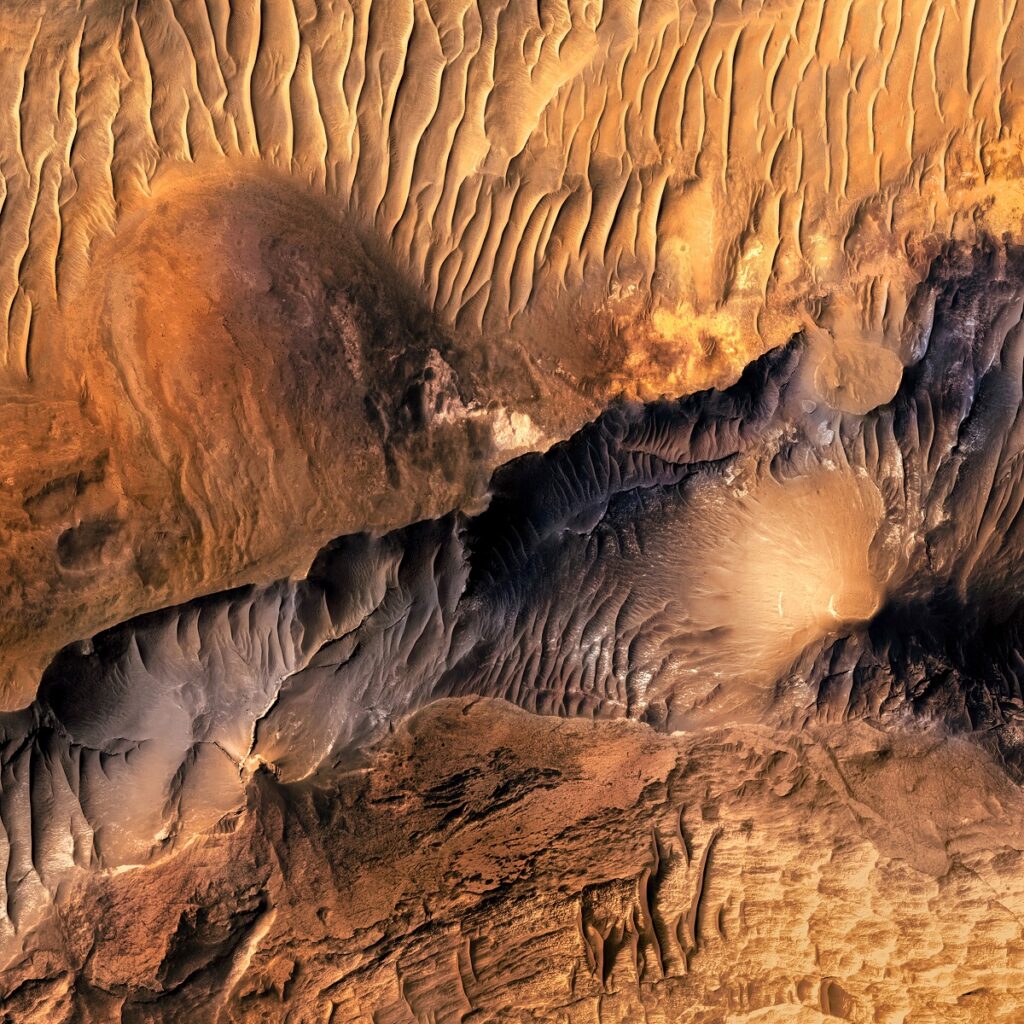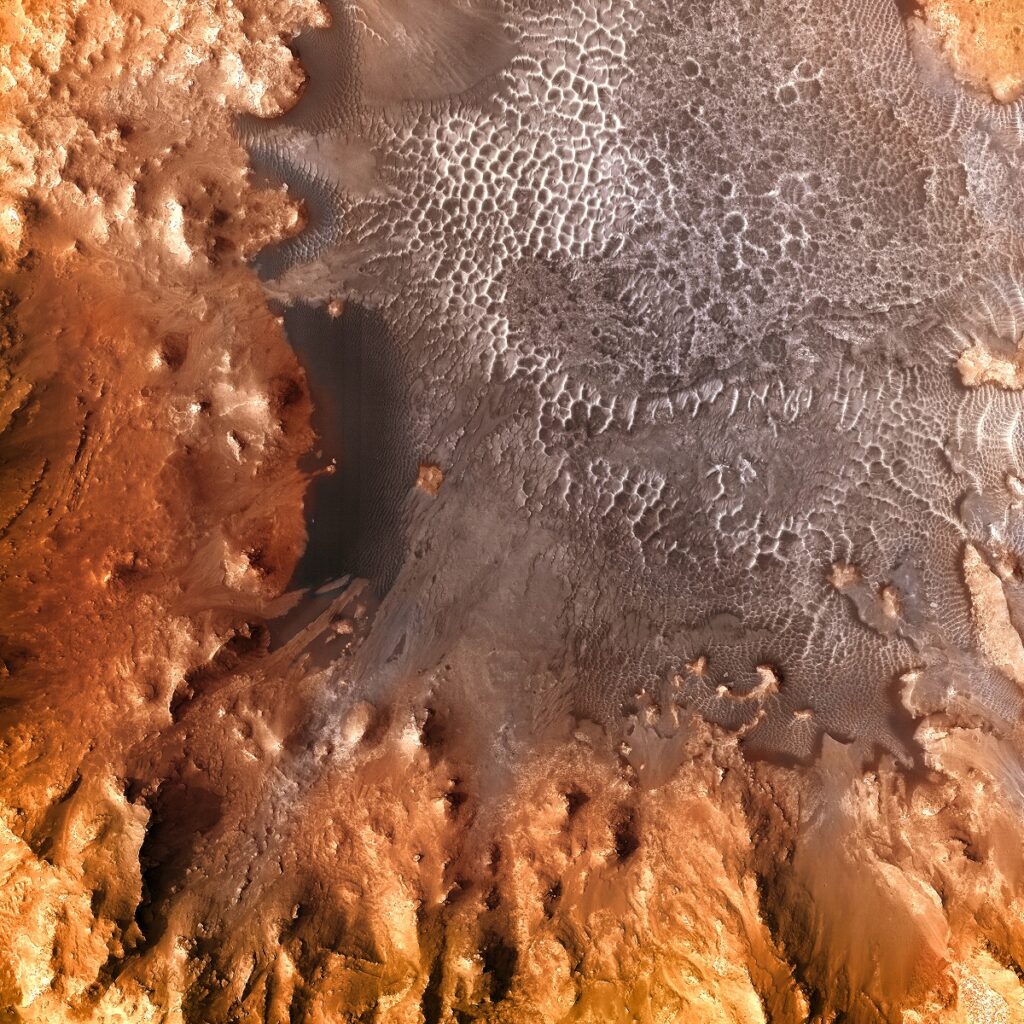Victoria Crater
Victoria Crater
We Build Custom 8K Mars Canvas Prints of Victoria Crater
Did you know we make
custom
8K Mars Canvas Prints
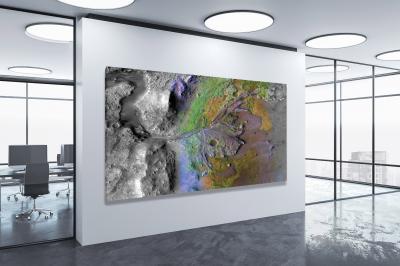
and
3D Marscapes
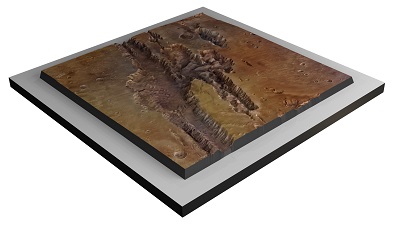
Victoria Crater
Victoria Crater stands as an iconic feature on the Martian landscape, serving as a focal point for scientists seeking to understand the geological history, climate evolution, and the potential for past life on the Red Planet. Named in honor of the Earth’s most renowned exploratory sailing vessels, HMS Victoria, the crater offers a rich array of geological and geomorphological features that continue to capture the scientific imagination.
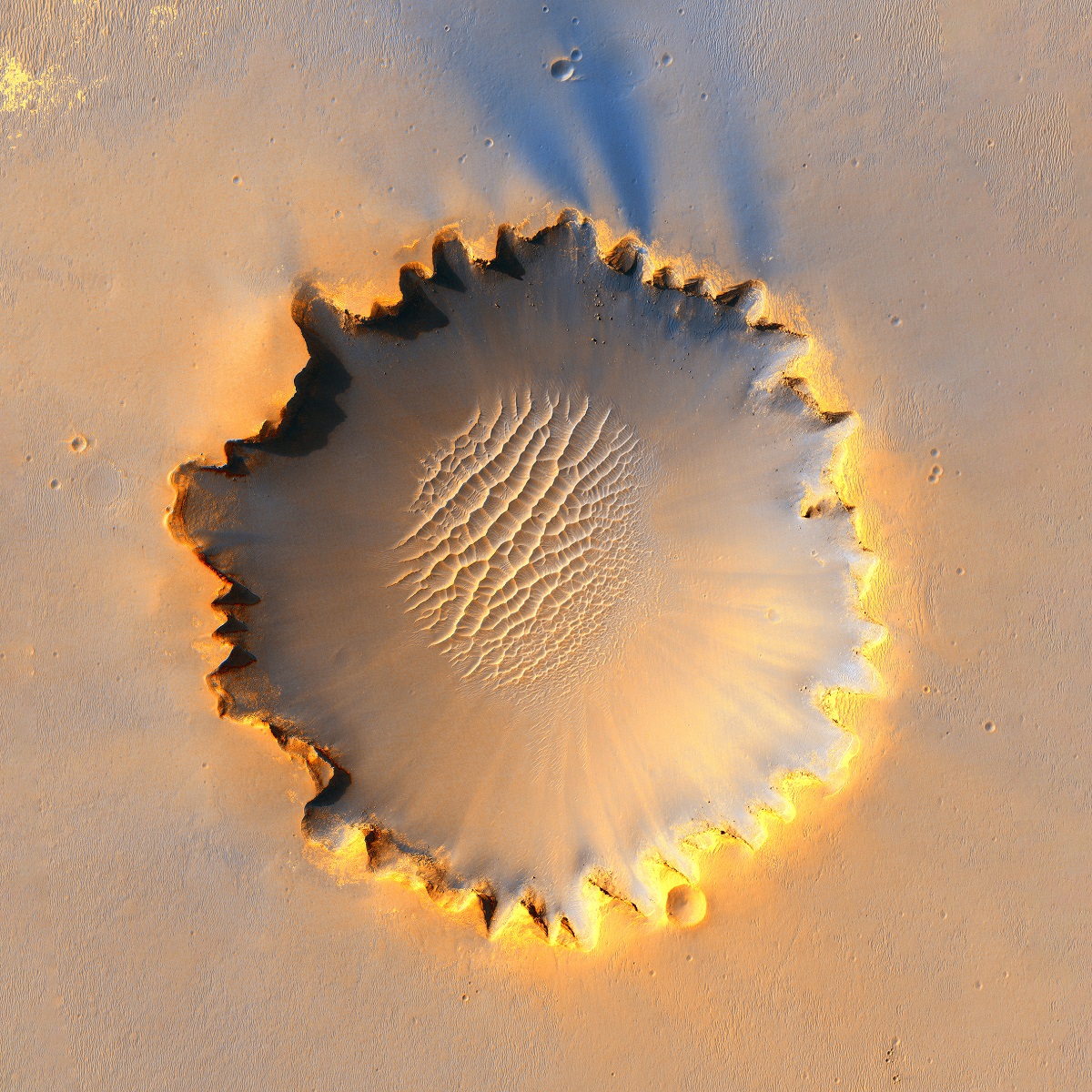 Victoria Crater
Victoria Crater
Geographical Location
Victoria Crater is positioned at the coordinates of approximately 2.05°S latitude and 5.50°W longitude, and is nestled in the expansive flatlands of the Meridiani Planum on Mars. This region itself is particularly compelling as it sits just two degrees south of the Martian equator and is part of the larger geological structure of the Tharsis volcanic plateau. The plateau is renowned for its volcanic activity and complex geological features, making Victoria Crater’s placement within it especially significant for scientific research. With a diameter stretching around 800 meters, Victoria Crater may not compete in terms of sheer size with other Martian craters like Gale or Gusev, which are much larger in scale. However, the crater’s relatively compact size is offset by its immense scientific value. Located within the hematite-abundant plains of Meridiani Planum, the crater becomes an invaluable focal point for geologists and planetary scientists aiming to unlock the geological and mineralogical secrets of Mars.
Advertisement
Sample Marscapes
Geological Composition
The geological makeup of Victoria Crater is intricate and multifaceted, providing a window into Mars’ complex geological timeline. The walls of the crater are characterized by stratified cliffs that offer a layered history of the planet. These cliffs contain sequential bands of rock and sediment layers that indicate various episodes of deposition and subsequent erosion. This stratigraphic layering serves as a chronological record that is indispensable for reconstructing the geological evolution of not just the local area but potentially broader Martian geology. The crater floor is a composite of basaltic sands and fragmented rocky outcrops, adding yet another layer of complexity to the site. Further, spectroscopic analyses have revealed areas rich in sulfates, pointing to a history steeped in aqueous processes. This lends credence to theories proposing the existence of water in the area of Meridiani Planum in the past. In essence, the multiplicity of geological elements within Victoria Crater makes it a microcosm of Martian geological history, thereby offering validation for data acquired through remote sensing methods.
Significant Discoveries
Hematite Deposits
One of the most remarkable scientific revelations concerning Victoria Crater has been the identification of hematite mineral deposits. Hematite generally forms in aqueous environments, and its presence here offers persuasive evidence for historical water activity in the Meridiani Planum region, deepening our understanding of Mars’ past climatic conditions.
Stratigraphic Record
The layered cliffs of the crater, especially those found in specific promontories like “Duck Bay,” “Cabo Frio,” and “Cape Verde,” present diverse compositions and sedimentary structures. These not only serve as a rich geological chronicle through various Martian epochs but may also provide clues about shifts in environmental conditions over time.
Impact Processes
The architecture of the crater’s rim and the pattern of ejected material offer a robust dataset for the study of impact processes on Mars. These features enhance our understanding of how craters form, what materials are involved, and how they evolve over Martian geological timescales.
Scientific Missions
Mars Exploration Rover (MER) Opportunity
The Opportunity rover was a cornerstone in the exploration of Victoria Crater. It landed on Mars in 2004 and spent an extended period examining this crater. Through the use of its panoramic camera (Pancam) and Miniature Thermal Emission Spectrometer (Mini-TES), Opportunity generated an enormous amount of detailed imaging and mineralogical data. This treasure trove of information has vastly contributed to our comprehensive understanding of Victoria Crater’s geological composition, mineralogy, and historical significance.
Geomorphological Features
Victoria Crater exhibits a myriad of intriguing geomorphological characteristics that make it a focal point for studying Martian landscape evolution. Its rim is scalloped and eroded, possibly from past wind and water activity, and offers a textured topography that is both visually and scientifically compelling. Furthermore, the crater features unique geomorphic elements such as “alcoves,” which are indentations along the rim; “promontories,” which are cliff-like features extending outward; and “bays,” flat areas situated between these promontories. These geomorphological features are complemented by the presence of dune fields on the crater floor, indicating sediment transport mechanisms and erosional processes that have sculpted the crater over extensive periods. Collectively, these features provide a comprehensive view of how erosional and depositional forces have interacted to shape Victoria Crater’s current topography.
Victoria Crater serves as a compelling subject for the study of Martian geology, past climatic conditions, and impact processes. Though not the largest of Martian craters, it stands out for the diversity of its geological features and its contributions to our understanding of the planet’s history. Through the continued analysis of data from past missions and the promise of future explorations, Victoria Crater will undoubtedly continue to be a cornerstone in our quest to unravel the mysteries of the Red Planet.
More About Mars
Contact us today to learn more about our 3D services and how we can help you achieve your goals.
